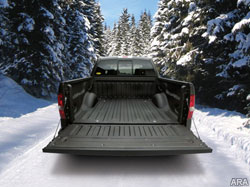
(ARA) – Cold-weather driving definitely presents its challenges. Aside from the chance of getting stuck or stranded in less-than-ideal weather, there’s also an increased risk of accidents when roads aren’t in optimal condition.
In fact, 24 percent of accidents are weather-related, according to the Federal Highway Administration. The best way to avoid a weather-related accident is to refrain from driving when conditions aren’t ideal. But since that’s not always possible, you should take steps to protect yourself and your vehicle before the weather turns bad.
The National Highway Transportation Safety Administration recommends taking the following actions before winter hits:
* Get your car serviced to see if you have any major issues that could leave you stranded in bad weather.
* Make sure your battery has enough power to start your car in cold weather.
* Make sure you have the proper amount of coolant to avoid freezing and consult your owner’s manual to see if you should change the coolant/water ratios.
* Fill up on wiper fluid and inspect your windshield wipers.
* Check tires for cracks and worn tread. Make sure your tire pressure is at recommended levels as colder air can cause them to deflate.
* Stock your vehicle with emergency items like a shovel, sand, blankets and jumper cables.
These preparations can also help protect your vehicle from winter wear:
* If you drive a truck, spray-on truck bedliners, such as those offered by LINE-X, can help protect your truck bed from rust and other negative effects of road salt and extreme temperature changes. LINE-X Protective Coatings has also been used to protect many of the nation’s bridges from corrosion, as well as the walls of the Pentagon against blast mitigation, so it has the reputation for standing up to the elements year round. More information can be found at www.LineX.com.
* Wax your car before winter hits. While you might think of waxing as more of a cosmetic treatment, it can also protect your car’s paint from road salt and scratching caused by extra sand on other debris on the road.
* Wash your car frequently in the winter to remove rust-causing agents. Pay special attention to the undercarriage of your vehicle and the wheel wells, as these are often the first areas to rust.
Now that you have all the information to prepare your car for the winter, be sure to drive carefully and pay attention to other drivers – not everyone is as well-prepared for winter driving as you are.





